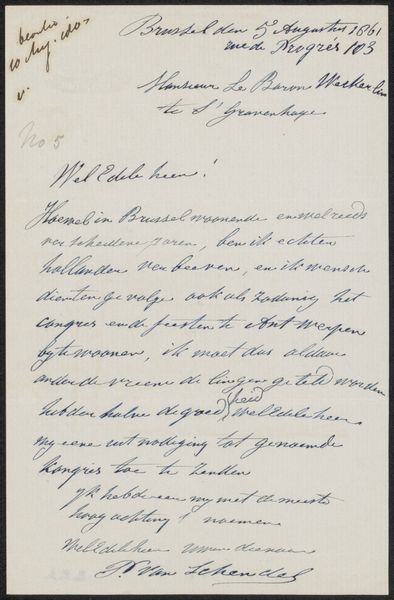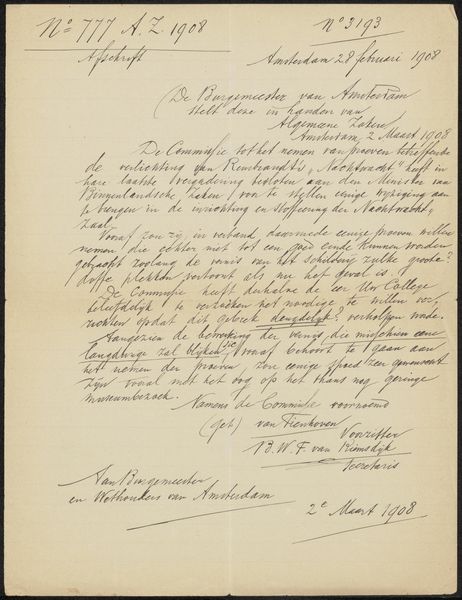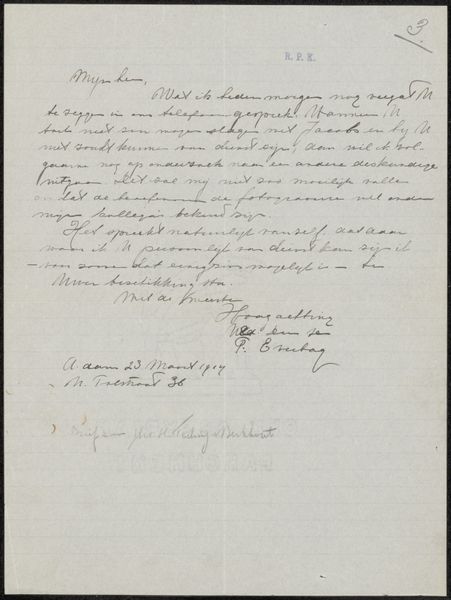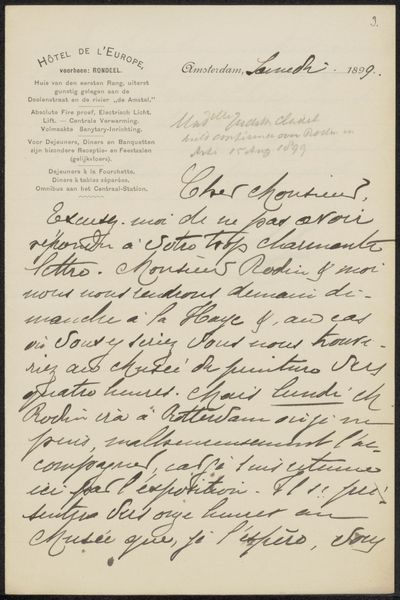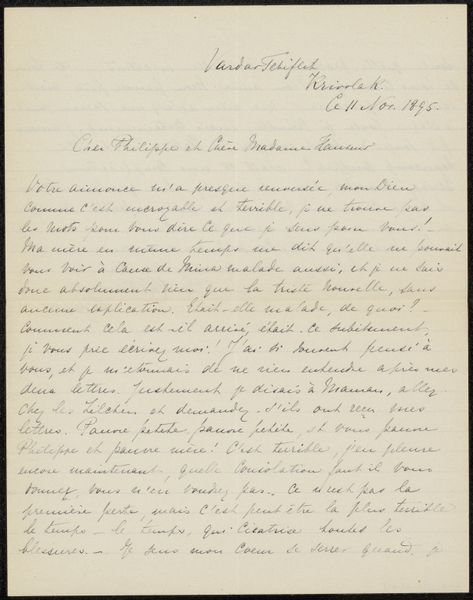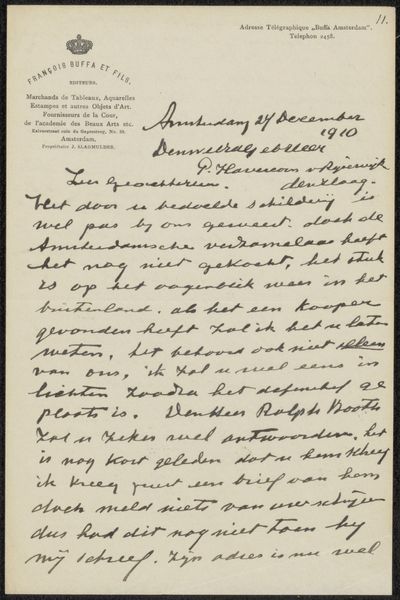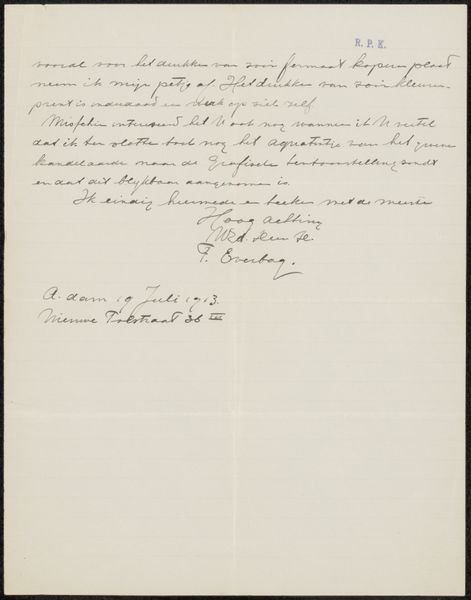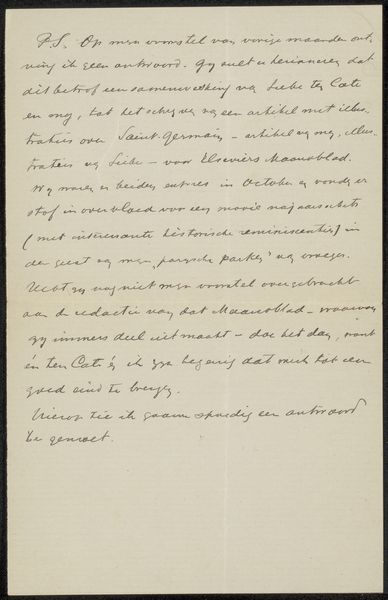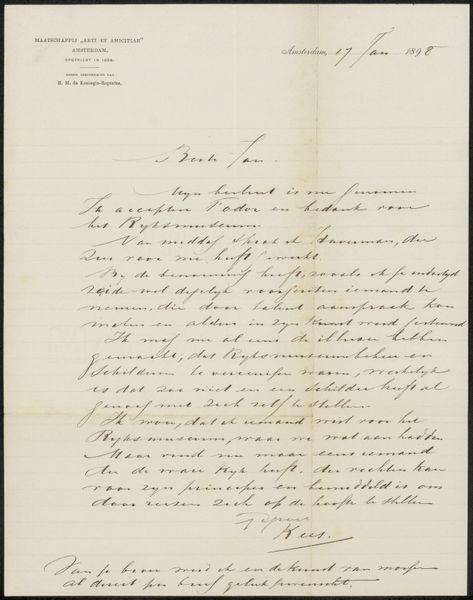
drawing, paper, ink, pen
#
drawing
#
paper
#
ink
#
intimism
#
pen
#
calligraphy
Copyright: Rijks Museum: Open Domain
Curator: Let’s turn our attention to a drawing by Carel Lodewijk Dake titled "Brief aan Pieter Haverkorn van Rijsewijk." It's an ink and pen drawing on paper, and though the precise date is uncertain, it was likely created sometime between 1912 and 1930. Editor: At first glance, there's a somber air around it—almost like a document of lament. I'm drawn in, although the dense, almost indecipherable calligraphy creates a sense of exclusion. Curator: The script definitely possesses an expressive quality. In some ways, it’s more than mere text; it hints towards the “intimism” movement with its concentration on personal experience—akin to peering into the artist's inner life, perhaps disclosing subtle reflections or observations. Editor: I wonder about the recipient, Pieter Haverkorn van Rijsewijk, and what their relationship was with the artist. Given that a letter can be considered an interpersonal dialogue, and its content seems fairly formal here, who held power? Is there some critique of social circles occurring at this historical juncture? Curator: Those are significant threads to unravel, particularly how this letter may speak to power relations of the time, but for now, let’s consider some cultural symbolism. Correspondence often holds multiple meanings, a visual manifestation of societal roles and interpersonal rituals. Dake is revealing an intricate and formal composition which invites questions of social structure. Editor: Right. In that respect, I start considering the broader implications on class and what's being codified or left out. Was writing of correspondence like this exclusive for members of a wealthy class? Curator: What’s so fascinating about artwork such as this, is that so many cultural narratives and stories of identity are expressed not just by overt symbolism, but by nuance in how humans engage through routine communications. Editor: Exactly! Analyzing works that focus on quotidian exchanges becomes paramount to understanding how structures and expectations were enforced in a cultural sense. It leaves me thinking deeply about unspoken sentiments. Curator: For me, seeing works such as this reminds me how history exists, preserved in personal, intimate forms such as calligraphy, that carry a sense of deep longing.
Comments
No comments
Be the first to comment and join the conversation on the ultimate creative platform.


